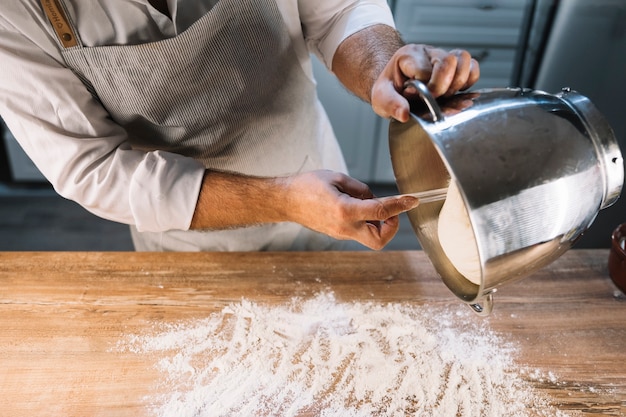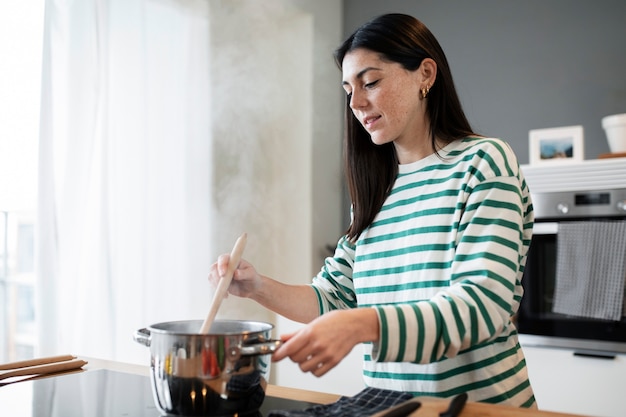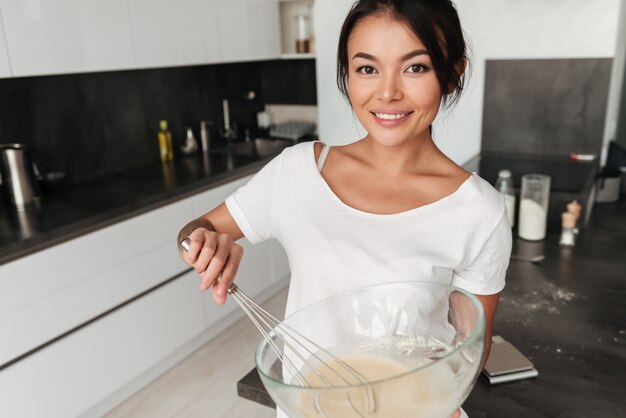As a seasoned cook who's spent countless hours in the kitchen, I've always been drawn to the simplicity of the humble rice cooker. It's a kitchen appliance that promises a hassle-free way to achieve perfectly cooked rice, all thanks to a simple process: throw in the rice, add water, press a button, and let it work its magic. But let's be honest, the question of how long it actually takes to cook rice in a rice cooker is one that often pops up. You'd think it's a straightforward answer, right? Well, as with most things in life, it's not quite that simple.
The truth is, the cooking time for rice in a rice cooker can vary significantly. It's like trying to measure the length of a piece of string – you have to consider multiple factors, like the type of rice, the amount you're cooking, and even the specific model of your rice cooker.
Let's embark on a journey into the fascinating world of rice cooker cooking times. We'll demystify the secrets to achieving perfectly fluffy, delicious rice every time, unveiling the nuances that influence those crucial minutes on the timer.
(Part 1) The Basics: Understanding Rice Cooker Types

Before we dive into the specifics of cooking times, it's essential to grasp the different types of rice cookers available. Not all rice cookers are created equal. Each one comes with its own set of features and capabilities, influencing the cooking process and, ultimately, the time it takes to achieve those perfectly cooked grains.
1. Traditional Rice Cookers: The Classic Choice
These are the classic rice cookers, the ones that have been a staple in kitchens for generations. They boast a simple design, typically featuring a single cooking function. The process is straightforward: add rice and water, press the "cook" button, and let the rice cooker do its job. These traditional models offer a reliable way to cook rice, often at a more affordable price point.
2. Multi-Cookers: The Versatile All-Rounders
These are the powerhouses of the kitchen world. Multi-cookers, also known as slow cookers, are capable of much more than just cooking rice. They are the culinary chameleons, transforming into steaming machines, sautéing wizards, slow-cooking maestros, and even baking experts. Their versatility allows you to cook a wide array of dishes, often with minimal effort and time.
3. Pressure Rice Cookers: The Speed Demons
These are the undisputed champions of speed when it comes to rice cookers. Pressure rice cookers utilize the power of pressure to cook rice considerably faster than their traditional counterparts. They are the express trains of the rice cooker family, delivering perfectly cooked rice in a fraction of the time. Their ability to cook quickly makes them a great choice for those with busy schedules.
(Part 2) The Rice Factor: choosing the right rice

Now that we've explored the different types of rice cookers, let's turn our attention to the star of the show – the rice itself. Different types of rice require varying cooking times and water-to-rice ratios. Choosing the right rice for your dish is crucial to achieving the desired texture and flavor.
1. white rice (Long Grain): The Versatile Staple
This is the most widely used type of rice, known for its versatility and ease of cooking. White rice typically takes around 20-30 minutes to cook in a traditional rice cooker. Its mild flavor and fluffy texture make it a suitable accompaniment to various dishes.
2. brown rice: The Nutrient-Packed Choice
Brown rice is a powerhouse of nutrients, boasting a rich nutty flavor and a slightly chewier texture. Because its bran and germ layers are intact, it requires more cooking time compared to white rice. Expect a cooking time of around 40-60 minutes in a traditional rice cooker. Brown rice is a healthy and satisfying option for those seeking a nutritious meal.
3. jasmine rice: The Aromatic Delight
Jasmine rice, with its distinctive floral aroma and fluffy texture, is a popular choice for many. It typically takes around 15-20 minutes to cook in a traditional rice cooker, making it a quick and flavorful option for various Asian dishes.
4. basmati rice: The Long-Grained Wonder
Basmati rice is prized for its long grains, distinct aroma, and exceptional fluffy texture. It typically takes around 20-25 minutes to cook in a traditional rice cooker, allowing it to retain its shape and unique aroma. Basmati rice is a staple in many Indian and Pakistani cuisines.
5. sticky rice: The Glutious Gem
Sticky rice, also known as glutinous rice, is known for its exceptional stickiness, making it perfect for sushi, mochi, and other Asian dishes. Its cooking time in a rice cooker is usually around 15-20 minutes. Its chewy texture and ability to hold its shape are key to its versatility in Asian cuisine.
(Part 3) The Water-to-Rice Ratio: The Key to perfect rice

The water-to-rice ratio is a crucial element in achieving perfectly cooked rice. It's the delicate balance that dictates the texture of your rice, ensuring it's neither mushy nor dry.
The general rule of thumb is to use a 1:1 ratio of water to rice for most types of rice. However, certain types of rice, like brown rice, may require a slightly higher water ratio due to their longer cooking time.
Most rice cookers have built-in measuring cups, so use those for accurate measurements.
(Part 4) The Amount of Rice Matters: Cooking for a Crowd or Just Yourself?
The amount of rice you're cooking can have a significant impact on the cooking time.
Cooking a small amount of rice, like for one or two people, will take less time than cooking a larger quantity for a family dinner.
For example, if you're cooking one cup of rice, it might take 15 minutes, but if you're cooking three cups, it could take closer to 25 minutes. This is because the amount of rice affects the heating process and the time it takes for the water to absorb into the grains.
(Part 5) The Rice Cooker's Power: A Crucial Factor
Now, let's talk about the rice cooker itself.
The wattage of your rice cooker plays a role in influencing the cooking time. A higher wattage rice cooker will heat up faster and cook the rice more quickly due to its increased power output. A rice cooker with a lower wattage may take a bit longer to reach the optimal temperature for cooking, resulting in a slightly extended cooking time.
(Part 6) The "Keep Warm" Function: A Time-Saver
Most rice cookers feature a handy "keep warm" function that is a true lifesaver.
Once the rice is cooked, the rice cooker automatically switches to the "keep warm" setting, keeping the rice warm and fluffy for hours. This is a fantastic feature for those who don't want to eat right away or for preparing multi-course meals. It allows you to cook the rice in advance and ensure it remains warm and enjoyable until it's served.
(Part 7) My Personal Experiences: Rice Cooker Cooking Time Adventures
Over the years, I've had my fair share of rice cooker cooking time adventures, each offering a unique lesson in the art of rice cooking.
Remember that time I was making a large pot of rice for a family gathering? I was so engrossed in chatting with guests that I completely forgot about the rice.
When I finally remembered and checked on the rice, it had been sitting in the "keep warm" setting for over an hour! To my surprise, it still turned out perfectly fine - a testament to the wonders of the "keep warm" function. It demonstrated its ability to maintain the rice's texture and temperature, preventing it from becoming dry or mushy.
Another time, I was in a rush to prepare a quick dinner. I threw in a cup of rice, pressed the "cook" button, and went about my business.
To my surprise, the rice was ready in just 12 minutes! I realized that I had accidentally used the "quick cook" setting, which is designed to cook rice faster. It was a game-changer for those busy weeknights, proving that there are shortcuts to achieving perfectly cooked rice.
(Part 8) Beyond the Basics: Tips for Perfect Rice
Here are some extra tips to help you elevate your rice-cooking game and achieve consistently perfect rice in your rice cooker:
- Rinse the rice: Rinsing the rice before cooking removes excess starch, which can make the rice sticky. This step is essential for achieving fluffy, separate grains.
- Use the right type of rice: Choose the type of rice that’s best suited for your dish. For example, sticky rice is perfect for sushi, while basmati rice is ideal for biryani. Understanding the characteristics of different rice types will help you achieve the desired texture and flavor for your dish.
- Experiment with different recipes: Don’t be afraid to experiment with different rice recipes. You can add ingredients like herbs, spices, or vegetables to your rice for extra flavor and texture. This allows you to personalize your rice dishes and explore new culinary horizons.
- Don't open the lid: Resist the temptation to peek at your rice while it's cooking. Opening the lid can disrupt the steam and affect the cooking process. The steam plays a vital role in cooking the rice evenly and maintaining its texture.
- Let the rice rest: After the rice is cooked, let it sit in the rice cooker for a few minutes before serving. This allows the steam to distribute evenly, resulting in fluffier rice.
(Part 9) Troubleshooting: When Your Rice Isn't Perfect
Sometimes, despite our best efforts, our rice may not turn out as we hoped. Don't despair! Here are some common rice cooker problems and how to fix them:
1. Mushy Rice: Too Much Water
If your rice is mushy, you probably used too much water, disrupting the balance between water and rice.
Try reducing the amount of water next time, ensuring a more even ratio.
2. Dry and Hard Rice: Not Enough Water
If your rice is dry and hard, you didn’t use enough water, resulting in undercooked grains.
Increase the amount of water next time, ensuring sufficient moisture to cook the rice properly.
3. Unevenly Cooked Rice: Inadequate Stirring
If your rice is unevenly cooked, it may be because you didn’t stir it properly before starting the cooking process.
Make sure to stir the rice thoroughly before adding the water and pressing the "cook" button. This ensures that the rice is evenly distributed in the pot, allowing for uniform cooking.
4. Burnt Rice: Overuse of "Keep Warm" Function
If your rice is burnt, it’s likely that the rice cooker was left on the "keep warm" setting for too long.
Try setting a timer to remind you to turn off the rice cooker after the cooking cycle is complete. This prevents the rice from drying out and burning.
(Part 10) Beyond Rice: Other Foods You Can Cook in a Rice Cooker
Did you know that your rice cooker is more than just a rice-cooking machine? It can transform into a versatile culinary tool, allowing you to cook a variety of dishes.
1. Porridge: A Warm and Comforting Start
Rice cookers are excellent for cooking porridge, creating a warm and comforting breakfast.
Just add your preferred grains (oats, quinoa, or even rice), milk, water, and a pinch of salt, and let the rice cooker do its magic.
2. Steamed Vegetables: Healthy and Flavorful
Rice cookers can also be used to steam vegetables, preserving their nutrients and vibrant colors.
Simply place the vegetables in a steamer basket over the rice cooker's pot and steam until tender. This method offers a healthy and flavorful way to prepare vegetables.
3. Soups and Stews: Hearty and Satisfying
Yes, you can even cook soups and stews in a rice cooker!
Just add all your ingredients, including the liquid, and let the rice cooker cook it all together. This method creates hearty and satisfying soups and stews with minimal effort.
(Part 11) Rice Cooker Cooking Time: A Table of Typical Times
Here’s a handy table that summarizes the typical rice cooker cooking times for different types of rice:
| Type of Rice | Cooking Time (Traditional Rice Cooker) |
|---|---|
| White Rice (Long Grain) | 20-30 minutes |
| Brown Rice | 40-60 minutes |
| Jasmine Rice | 15-20 minutes |
| Basmati Rice | 20-25 minutes |
| Sticky Rice | 15-20 minutes |
(Part 12) FAQs: Your Rice Cooker Cooking Time Questions Answered
Here are some frequently asked questions about rice cooker cooking time:
1. How do I know when the rice is cooked?
Most rice cookers have an automatic "keep warm" function that will switch on when the rice is cooked. This provides a visual indicator that the rice is ready.
You can also check the rice by gently pressing on it with a spoon. If it’s cooked, it will have a soft, fluffy texture. This simple test helps you determine the rice's doneness.
2. What happens if I overcook the rice?
If you overcook the rice, it will become mushy and lose its texture.
However, don’t worry too much about overcooking. You can still eat the rice, but it might not be as enjoyable.
3. Can I use the "keep warm" function for a long time?
Yes, you can use the "keep warm" function for several hours.
However, it’s best to eat the rice as soon as possible, as it may start to dry out after a few hours.
4. Can I add ingredients to the rice cooker while it's cooking?
It’s generally best to avoid adding ingredients to the rice cooker while it’s cooking.
This can disrupt the cooking process and may lead to unevenly cooked rice.
If you want to add ingredients, it’s best to do it after the rice is cooked.
5. What’s the best way to clean a rice cooker?
Most rice cookers are dishwasher safe, but it’s best to check the manufacturer’s instructions.
You can also wash the rice cooker by hand with warm soapy water.
Make sure to rinse it thoroughly and dry it completely before storing it.
(Part 13) Conclusion: The Joy of Perfectly Cooked Rice
And there you have it! Rice cooker cooking time – it’s not as straightforward as it seems, but with a little understanding of the factors involved, you can achieve perfectly cooked rice every single time.
Whether you’re cooking for one or for a crowd, a rice cooker is a kitchen essential for making delicious, fluffy rice effortlessly.
So, the next time you’re craving a comforting bowl of rice, don’t hesitate to whip out your rice cooker and let it work its magic.
Enjoy!
Everyone is watching

Corn on the Cob: The Ultimate Guide to Perfectly Cooked Ears
Healthy MealsAh, corn on the cob. Just the name evokes images of sunny days, barbecues, and that sweet, juicy flavour that ...

Scallops: The Ultimate Guide to Perfect Cooking
Healthy MealsAh, scallops. Those delicate, sweet, and utterly delicious morsels of the sea. They hold a special place in my...

Spaghetti Squash: The Ultimate Guide to Cooking and Serving
Healthy MealsRemember that time you saw spaghetti squash at the supermarket, looking all bumpy and strange, and thought, "W...

Salmon Cooking Times: Perfect Guide for Every Recipe
Healthy MealsLet me tell you, cooking salmon is an art form. It's all about getting that perfect balance: juicy and tender,...

Ham Cooking Time: How Long to Bake, Smoke, or Boil a Delicious Ham
Healthy MealsAh, ham. It's a classic, isn't it? A real crowd-pleaser, especially around holidays. And when done right, it'...
